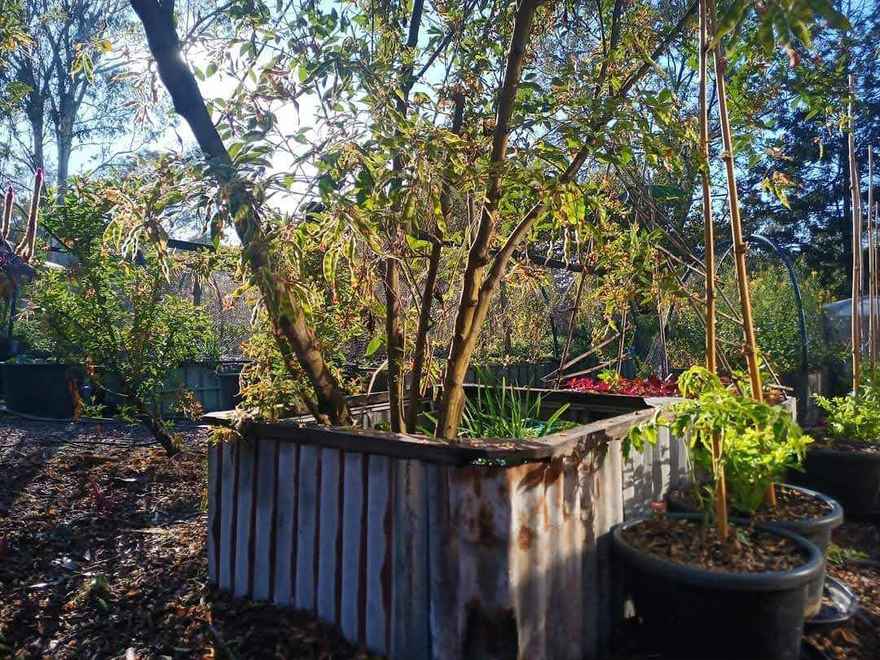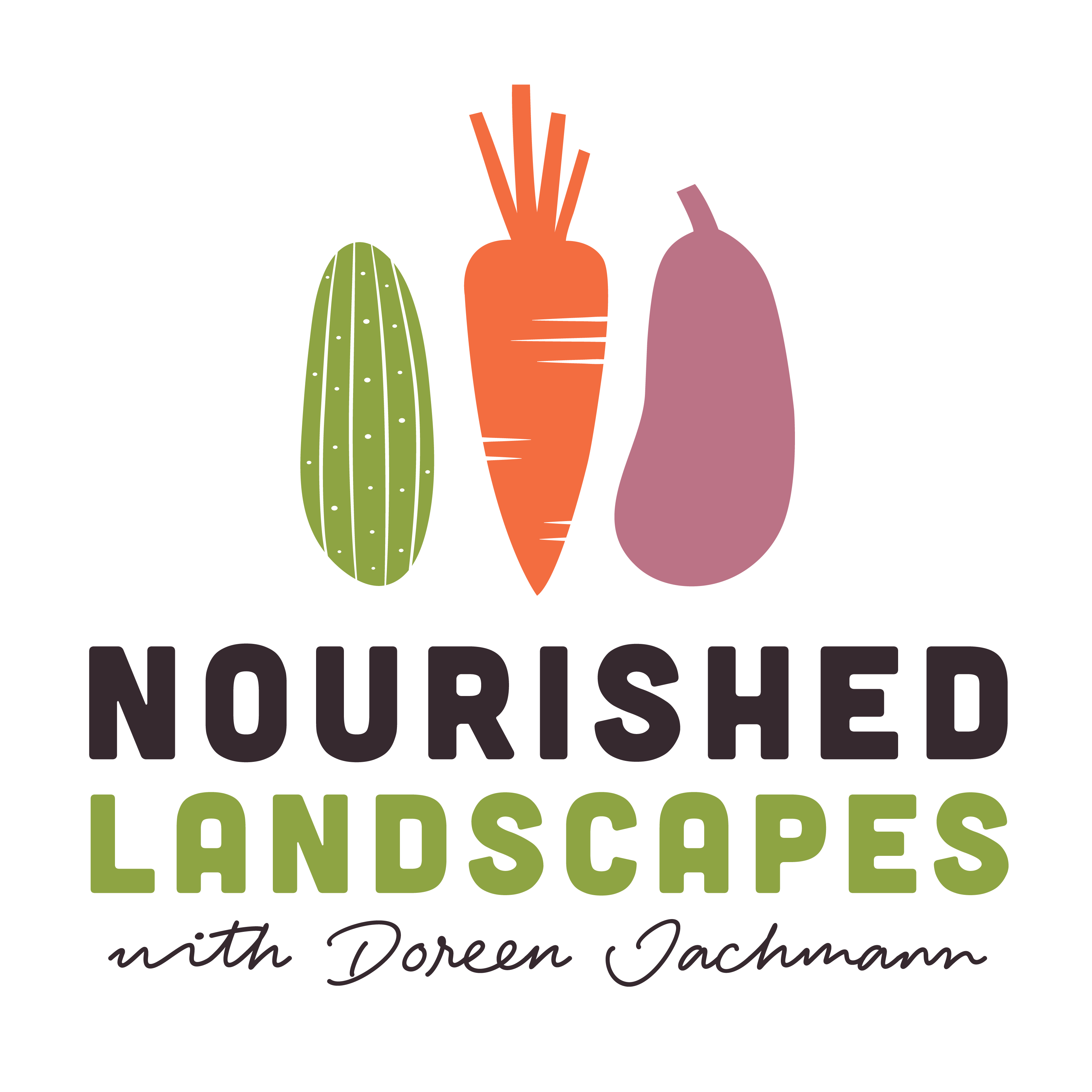Integrating Wicking Beds in Your Kitchen Garden Using Permaculture Design Principles

Integrating Wicking Beds in Your Kitchen Garden Using Permaculture Design Principles
Welcome to the heart of sustainable living—the kitchen garden, where the magic of fresh produce meets the wisdom of permaculture design. In this guide, we'll explore how integrating wicking beds into your kitchen garden can elevate both its productivity and sustainability, all while staying true to the principles of permaculture.

IBC wicking bed at Bloomfield's Homestead cladded using old, corrugated sheeting.
Understanding Wicking Beds:
Let's start by unraveling the mystery of wicking beds. Picture this: a self-watering oasis nestled right in your kitchen garden. Wicking beds are ingenious creations designed to efficiently utilize water by employing a sub-irrigation system. At the heart of each wicking bed lies a reservoir filled with water-absorbing materials like gravel, perlite, sand, woodchips. A wick—often made of capillary matting or geotextile fabric—extends from the reservoir into the soil, delivering moisture directly to plant roots through capillary action. It's like having a secret hydration system for your garden, ensuring that your plants stay happy and healthy with minimal water wastage.


Source: Root Simple Source: Green Planet Gardening

A diagram of a self-wicking garden bed Photograph: Australian Institute of Botanical Science
Benefits of Wicking Beds in the Kitchen Garden:
Now, let's explore the many benefits of incorporating wicking beds into your kitchen garden:
- Water Efficiency: Wicking beds are champions of water conservation, delivering moisture directly to plant roots and minimizing evaporation and runoff.
- Drought Resilience: With their built-in reservoirs, wicking beds provide a buffer against drought conditions, ensuring a steady water supply for your plants.
- Space Optimization: Wicking beds are space-efficient and can be tailored to fit the layout of your kitchen garden, maximizing growing space and productivity.
- Soil Health: By maintaining consistent moisture levels and preventing waterlogging, wicking beds promote healthy root development and microbial activity in the soil.
- Weed Suppression: The mulch layer on top of wicking beds helps suppress weed growth, reducing the need for herbicides and manual weeding.
- Extended Growing Season: Wicking beds can extend the growing season in your kitchen garden by providing a warm and moisture-rich environment for plants, even in cooler months. But also coping really well during the harsh Australian summer.

IBC wicking beds at Bloomfield's Homestead
While wicking beds offer numerous benefits for water-efficient gardening, it's important to acknowledge some potential drawbacks and considerations:
- Initial Cost: Setting up wicking beds can involve higher upfront costs compared to traditional garden beds. Materials such as containers, reservoir liners, and wicking materials may require investment, especially for larger-scale installations.
- Complexity of Construction: Building wicking beds requires careful planning and construction to ensure proper functionality. Designing the reservoir, wick system, and soil layers requires attention to detail, and may be more complex than traditional gardening methods.
- Limited Root Depth: The design of wicking beds, with a reservoir located beneath the soil surface, can restrict the depth of root growth for certain plants. Deep-rooted vegetables or trees may not thrive in wicking beds due to space limitations. Fortunately, most vegetables thrive in wicking beds.
- Potential for Salt Buildup: In regions with high salinity in the soil or water supply, wicking beds can be prone to salt buildup over time. This can affect plant health and may require periodic flushing or soil amendments to mitigate.

Design Considerations for Wicking Beds in the Kitchen Garden:
Now, let's roll up our sleeves and delve into the design considerations for incorporating wicking beds into your kitchen garden:
- Location and Orientation: Choose a sunny spot with good drainage for your wicking beds to ensure optimal growing conditions for your plants.
- Construction Materials: Opt for durable and non-toxic materials such as food-grade containers or reclaimed timber for building your wicking bed structures.
- Reservoir Design: Design the reservoir with sufficient depth and capacity to hold an ample supply of water for your plants, taking into account factors such as climate and plant water requirements.
- Wick Material: Select a high-quality wick material (e.g., sand, capillary matting, geotextile fabric) that will efficiently deliver moisture to plant roots and withstand long-term use.
- Soil Mix: Use a well-balanced soil mix consisting of compost, sand, and organic matter to ensure proper drainage and nutrient availability for your plants.
- Mulching: Apply a thick layer of organic mulch on the soil surface to conserve moisture, suppress weed growth, and regulate soil temperature in your wicking beds.
Integration into Permaculture Design Principles:
Now, let's explore how wicking beds seamlessly integrate with the principles of permaculture design in your kitchen garden:

- Observe and Interact: Wicking beds encourage gardeners to observe moisture levels and plant health, interacting with the system by adjusting water levels and observing how plants respond.
- Catch and Store Energy: Wicking beds efficiently utilise water by storing it in reservoirs beneath the soil surface, mimicking natural systems of water storage and retention.
- Obtain a Yield: Wicking beds provide a consistent yield of fresh produce while minimising water usage, maximising the output of edible crops from limited garden space.
- Apply Self-Regulation and Accept Feedback: Wicking beds self-regulate moisture levels, providing feedback through plant health and growth patterns that guide gardeners in managing water resources.
- Use and Value Renewable Resources and Services: Wicking beds utilise renewable resources such as sunlight and rainwater, reducing reliance on non-renewable resources like municipal water supplies.
- Produce No Waste: Wicking beds minimise water waste through efficient irrigation, and organic materials used in construction and maintenance can be composted, closing the nutrient loop.
- Design from Patterns to Details: Wicking beds are designed based on patterns of water flow and plant needs, with attention to detail in reservoir size, wick placement, and soil composition.
- Integrate Rather than Segregate: Wicking beds integrate water management into garden ecosystems, fostering beneficial relationships between plants, soil microbes, and water availability.
- Use Small and Slow Solutions: Wicking beds offer a small-scale, incremental solution to water management, allowing gardeners to gradually implement sustainable practices in their gardens.
- Use and Value Diversity: Wicking beds support diverse plant species with varying water needs, promoting biodiversity and resilience within the garden ecosystem.
- Use Edges and Value the Marginal: Wicking beds utilise edge spaces efficiently, maximising planting area and creating microclimates that support plant growth along the bed edges.
- Creatively Use and Respond to Change: Gardeners can creatively adapt wicking bed designs and management practices in response to changing environmental conditions, ensuring resilience and sustainability over time.
By aligning with these permaculture principles, wicking beds contribute to the creation of resilient, productive, and sustainable garden ecosystems, benefiting both plants and people. By integrating wicking beds into your kitchen garden using permaculture design principles, you can create a sustainable and productive oasis that nourishes both body and soul. With their water-saving prowess, space-efficient design, and soil-nurturing benefits, wicking beds are a valuable addition to any kitchen garden, helping you grow bountiful harvests while treading lightly on the Earth. So, why wait? Start planning your wicking bed garden today and reap the rewards of sustainable living tomorrow!
If you would like some hands-on learning and see productive wicking beds set up in a kitchen garden then come to Bloomfield’s Homestead, where Nourished Landscapes runs the wicking bed workshop a couple of times per year. Workshops


0 comments
Leave a comment
Please log in or register to post a comment